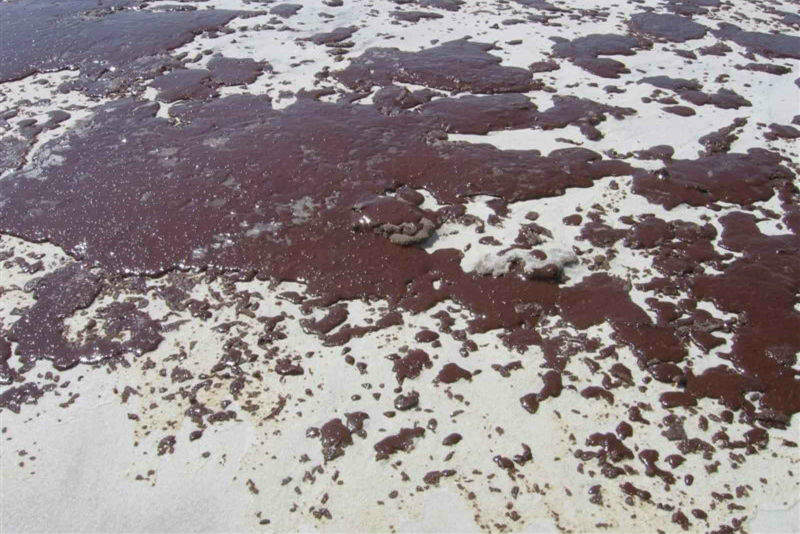
Environmental Impact of Arctic Oil Spills
The Arctic region contains an estimated 13% of the world’s undiscovered oil, with one third lying within US territory. The challenge of drilling in the Arctic and mitigating oil spills in the ocean was best illustrated in 2012 when Shell’s unsuccessful attempt resulted in the Kulluk drilling rig running aground and needing to be rescued.
However, the effects of climate change on retreating and thinner ice formations may pave the way for economically feasible shipping routes in the Arctic for the first time in modern history.

Discover B2B Marketing That Performs
Combine business intelligence and editorial excellence to reach engaged professionals across 36 leading media platforms.
Why are oil spills harder to clean up in the Arctic, how do they damage the environment and what can researchers do to learn more about mitigating spills in this unique climate?
Oil spills in the ocean: the Arctic as a new frontier
Record high temperatures attributed to global warming have once again opened the region to a new era of trans-Arctic shipping. In 2017, the first 300m long commercial LNG oil tanker crossed the Northern Sea Route between Europe and Asia without the protection of an icebreaker.
While there has been little research into the effects that oil spills have on the Arctic environment, some studies have shown that the unique climate poses its own challenges, and nature is slower to respond to oil spills than it is in more temperate or tropical conditions.
Oil spills in the ocean: the limitations of oil-eating microbes
During the clean-up operations of the Exxon Valdez spill in Alaska and Deepwater Horizon in the Gulf of Mexico, only 15% to 25% of oil was successfully removed through mechanical methods, such as mechanical recovery and burning of the spilled oil. The bulk of the clean-up was carried out by oil-eating bacteria in the water.

US Tariffs are shifting - will you react or anticipate?
Don’t let policy changes catch you off guard. Stay proactive with real-time data and expert analysis.
By GlobalDataOf particular interest to scientists is the way in which oil-eating microbes are slowed down in ice-cold temperatures. The Arctic Research Centre at Aarhus University in Denmark has found that low temperatures change the chemical properties of the spilled oil and slow down biodegradation. Cold oil is said to be more viscous, making it harder for oil-eating microbes to break it down.
The lack of waves in the Arctic Ocean poses another challenge. Where there is sea ice and therefore fewer waves, the oil does not disperse into small droplets.
There is also a lower level of nutrients, such as nitrogen and phosphorus, which feed algae and bacteria in the water. Without these nutrients, the bacteria cannot develop at an optimum rate.
Another interesting feature is the long (often 24-hour) periods of sunlight in the Arctic summer, which can both help and hinder clean-up operations. On the one hand, long hours of sunlight help the microbes to break up oil molecules, but conversely this could make the oil compounds more toxic for aquatic organisms.
Oil spills in the ocean: a collective response
US National Research Council (NRC) committee chair Martha Grabowski noted in a report the lack of a ‘presence’ in the Arctic that can respond to oil spills in the ocean as another challenge. Grabowski says: “A ‘presence’ is bodies, but it is also vessels or platforms, and aerial capability for airlift in the event of an oil spill response. The transportation infrastructure that the rest of us would presuppose to be existing as it is in the lower 48 [region of the US mainland] simply doesn’t exist up north [i.e. in the Arctic].”
The NRC report promotes intergovernmental cooperation, especially in areas of the Arctic that lie on international demarcation lines, such as the Bering Strait. It advises the US to conduct joint spill response exercises with Russia and Canada, as well as response agreements currently in place.
Moreover, the Arctic is home to the bowhead whale, polar bears and ringed seals, to name just a few endangered species. The remote locations, adverse conditions, indigenous hunting and safety hazard of treating oil spills can be dangerous to these animals.
“There is a general lack of scientific study, approved protocols, and consensus” on how to prevent animals from entering spill zones, according to the NRC.
Oil spills in the ocean: conducting further research
Taking the Kulluk incident and the Exxon Valdez spill as cautionary tales, the NRC found that oil companies operating in the Arctic need to carry out further research on how oil spills affect the climate, including deliberately spilling a small volume of oil to see how the marine environment adapts.
US research facilities such as the Ohmsett test centre in New Jersey have simulated spills in icy conditions, but permits to allow controlled spills are becoming harder to obtain.
Moreover, the technology for monitoring and mapping the Arctic has improved over the last ten years, but there are still significant gaps in knowledge.
“A decade ago, I think there was hope we might have filled some of these data gaps,” says Mark Myers of the University of Alaska, Fairbanks, who contributed to the NRC report. “Fundamental, high-resolution data that we need sometimes just isn’t there.”
He adds that Arctic shorelines are “mostly obsolete’” with less than 10% of the Arctic coastline adequately recorded.





